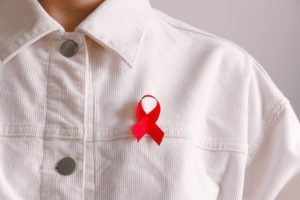HIV. A familiar word to many of us. We have probably heard about it on TV, on the news and maybe even from people that we know. It’s not surprising since its reputation has escalated over the years. But how much do we really know about this disease?
HIV – a history
It was postulated that this disease may have originated from the Simian Immunodeficiency Virus, an almost similar disease found among chimpanzees. It was possibly transferred to humans when chimpanzees were hunted for their meat. This disease might have started as early in the 1920’s, but in 1981, doctors in the United States noticed a trend of diseases that occur if the body’s immune system is poor. It started among men-who-has-sex-with-men and later among people who injected drugs. Since then, the world has started seeing rising cases of HIV.
 So what is HIV?
So what is HIV?
HIV is a virus called Human Immunodeficiency Virus. As its name implies, HIV kills our body’s immune system. In our body, we have a fully developed immune system whose job is to protect us from diseases. We have a variety of immune cells with different functions. HIV specifically attacks immune cells called CD4 or T-helper Lymphocytes. CD4 function is to kill viruses that enters our body. When HIV enters our body’s blood circulation system, it will attach itself and enter the CD4 cell. In the CD4 cell, the virus multiplies while killing the CD4 cell. The viruses then leave the dead CD4 cell and attack other CD4 cells. What happens in the end, more viruses are made and more CD4 cells are killed leaving our body’s immune system deplete of cells to defend our bodies from other diseases and cancers. This process could take many years and the host will slowly become ill. The host usually will not notice it at first and think heor she is healthy until it comes to the point that he orshe becomes seriously ill. During this time, the host could unknowingly have spread HIV to others.
What is AIDS?
AIDS is when the body’s CD4 count has become very low (<200 cells/m3) or when diseases associated with immune suppression start to manifest. Usually those with AIDS will be very ill with poor prognosis.

How does one get this disease?
HIV is found in the fluids in our body such as blood, semen, vaginal fluids and breast milk. Any contact of these body fluids with either our mucosa (skin that lines inside our rectum, vagina or mouth), our blood stream or open wounds could lead to transmission. Therefore, acts such as sexual intercourse with a person with HIV; or receiving blood from an infected donor; or transmission from mother to child during pregnancy, labour and breastfeeding; or injecting a used needle into our veins are some of the ways a person could get infected.
What is a Window period?
‘Window period’ refers to a time frame of 2-3 months after a person first contract HIV. During this time period, he/she will not have any antibodies towards HIV yet, meaning that if he/she has a test for HIV, it will come back as false negative. It is advisable for someone who has been exposed to the risks of HIV and whose test comes back as negative to repeat the test in a few months’ time. While at the same time take precautions not to spread HIV to others.
What are the symptoms of early HIV infection?
A person with early HIV infection can have non-specific symptoms such as fever, feeling unwell or sore throat. It is often gets mistaken as the flu or common cold. Therefore, it is important that if you have any exposure to a situation that makes you more likely to get HIV (such as sexual intercourse without using condom with a person who might have HIV or injecting a needle that was used by a person who might have HIV) and later develop these non-specific symptoms, to get checked. If your test turns out negative, it doesn’t mean that you are safe yet. Get retested in 2-3 months’ time to be sure.
Written by,
References
- https://www.cdc.gov/hiv/basics/whatishiv.html
- https://emedicine.medscape.com/article/211316-overview
- https://www.hiv.gov/hiv-basics/overview/about-hiv-and-aids/what-are-hiv-and-aids
[This article belongs to The Malaysian Medical Gazette. Any republication (online or offline) without written permission from The Malaysian Medical Gazette is prohibited.]
